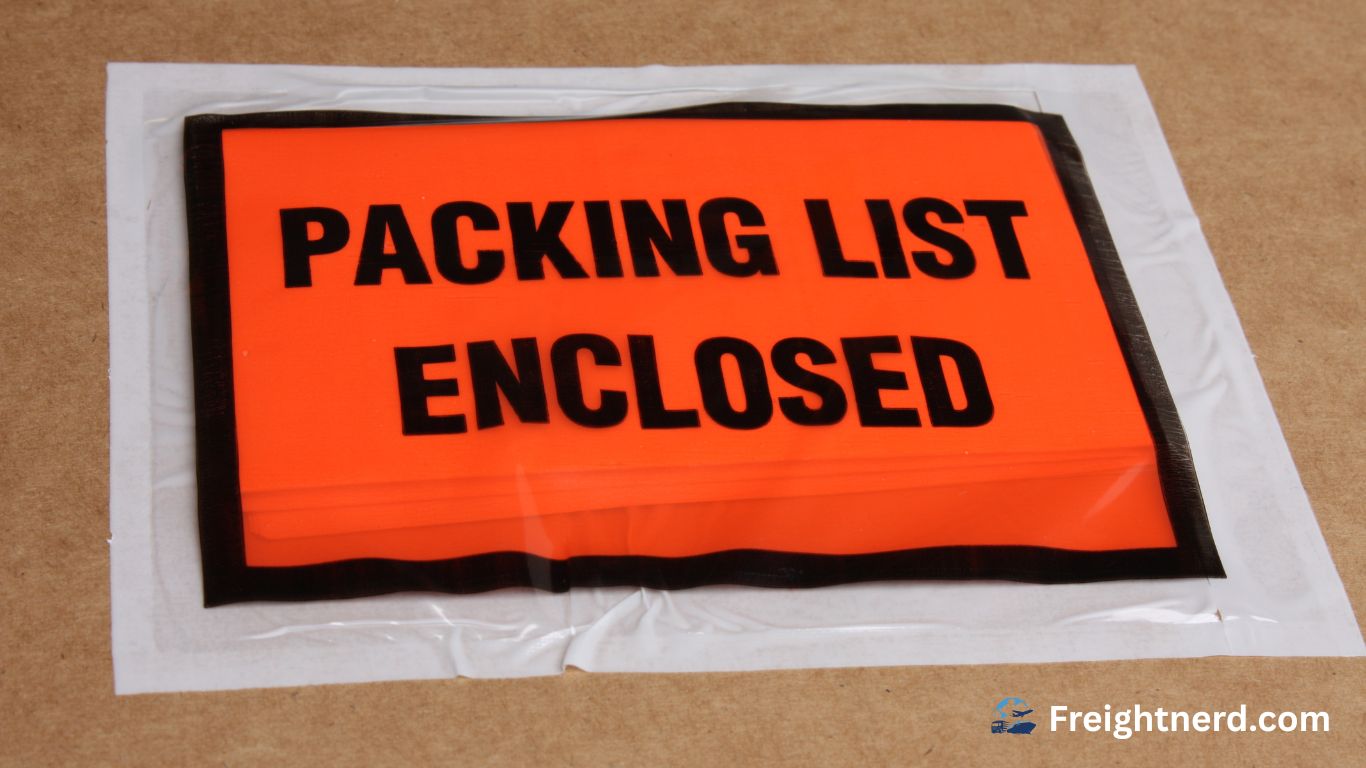A packing list is a critical document for international shipping, detailing your shipment’s contents, including package count, weights, dimensions, and descriptions. Without a professional packing list, you risk customs delays, delivery errors, or rejected shipments. For example, one exporter faced a $5,000 delay because their packing list omitted item weights, halting customs clearance.
This guide explains how to make a shipping packing list step-by-step, highlights must-include details, and offers a free packing list template for exports to simplify the process.
What Is a Packing List for International Shipping?
A packing list (also known as a shipping or delivery packing list) is a document prepared by the shipper that describes a shipment’s contents in detail. It travels with the cargo and is used by customs officials, freight forwarders, and receivers.
Key purposes include:
- Speeding up customs clearance
- Verifying goods upon delivery
- Assisting carriers with proper cargo handling
- Supporting insurance claims or dispute resolution
Why a Professional Packing List Matters
A well-crafted packing list ensures smooth shipping operations:
- Faster Customs Clearance: Accurate details help customs officials process shipments quickly.
- Error-Free Deliveries: The consignee (receiver) knows exactly what’s in each package.
- Insurance Support: A packing list verifies goods for claims in case of loss or damage.
- Fewer Disputes: Clear documentation reduces errors, like delivering the wrong items.
For instance, a small e-commerce business avoided a costly return by including a detailed packing list that matched their commercial invoice, ensuring seamless delivery to Europe.
How to Create a Packing List for International Shipping: Step-by-Step
Follow these steps to create a professional packing list:
1. Add Shipper and Consignee Details
Include:
- Shipper (sender): Name, address, phone number, email
- Consignee (receiver): Name, address, phone number
2. Include Shipment Information
Provide:
- Invoice number (if applicable)
- Shipment date
- Transport mode (e.g., air, sea, truck)
- Carrier name (optional)
3. List Items Clearly
For each package or product, include:
- Description: Brief but specific (e.g., “Men’s Cotton T-Shirts”)
- Quantity: Number of units (e.g., 500 pieces)
- Weight: Unit weight and total weight (in kg or lbs)
- Dimensions: Length × Width × Height (in cm or inches)
- Packaging Type: Box, pallet, crate, etc.
4. Summarize the Shipment
Include totals:
- Total number of packages
- Total gross weight (including packaging) and net weight (contents only)
- Total volume in CBM (Cubic Meters, a measure of shipment volume; calculate as Length × Width × Height in meters)
5. Add Optional but Helpful Fields
- HS Codes: Harmonized System codes classify goods for customs (find them via World Customs Organization).
- Country of Origin: Where the goods were made.
- Special Instructions: E.g., “Fragile,” “Keep Dry,” or “Handle with Care.”
Example Packing List Format
| Item No. | Description | Quantity | Weight (kg) | Dimensions (cm) | Packaging Type |
|---|---|---|---|---|---|
| 1 | Men’s T-Shirts | 500 pcs | 100 | 100 × 80 × 60 | Box |
| 2 | Women’s Jeans | 300 pcs | 150 | 120 × 90 × 70 | Pallet |
Total: 2 packages, 250 kg gross weight, 0.75 CBM
Common Packing List Mistakes to Avoid
Avoid these pitfalls to prevent delays or disputes:
- Inaccurate Details: Incorrect weights or quantities can trigger customs inspections. Double-check measurements.
- Mismatched Documents: Ensure the packing list matches the commercial invoice and bill of lading.
- Vague Descriptions: Use specific terms (e.g., “Laptop Batteries” instead of “Electronics”) to avoid confusion.
- Missing HS Codes: Some countries require HS codes for customs clearance.
Country-Specific Packing List Tips
Requirements vary by destination:
- EU Countries: Require detailed descriptions and HS codes. Include EORI numbers if applicable.
- United States: The U.S. Customs Service mandates country of origin and precise weights.
- Australia: Specify packaging materials (e.g., wooden pallets) due to biosecurity rules.
Create a Packing List Instantly
Skip manual formatting with our Free Packing List Template for Exports. Enter your shipment details, and download a professional packing list in seconds!
Create Your Packing List Instantly
Save time and avoid errors — generate a professional export packing list with our free tool.
Open Packing List Generator
👉 Download Our Free Packing List Template (PDF, customizable)
🖼️ Infographic: 5 Steps to a Perfect Packing List

Top Tips for an Effective Packing List
Ensure Accuracy
Double-check quantities, weights, and dimensions to avoid customs delays.
Stay Consistent
Match details across all shipping documents (e.g., invoice, bill of lading) to prevent disputes.
Use Clear Language
Simple, specific descriptions reduce confusion during customs checks.
Highlight Special Instructions
Flag fragile, hazardous, or temperature-sensitive goods clearly.
Final Thoughts
A professional packing list is more than paperwork—it’s your key to smooth international shipping, faster customs clearance, and happy customers. Whether you’re a small business or a seasoned exporter, create a packing list for international shipping that protects your cargo and reputation.
Need help? Use our Free Packing List Generator or download our free packing list template for exports to get started today!
Frequently Asked Questions (FAQ)
Q: Why do I need a packing list for international shipping?
A: It provides a detailed inventory for customs, freight forwarders, and receivers, ensuring faster clearance and accurate deliveries.
Q: What should a shipping packing list include?
A: Shipper/consignee details, item descriptions, quantities, weights, dimensions, and shipment totals. Optional fields include HS codes and special instructions.
Q: Can a packing list help with insurance claims?
A: Yes, it verifies shipment contents for claims in case of loss, damage, or disputes.
Q: What if my shipment includes hazardous materials?
A: Include special handling instructions and ensure compliance with regulations like IATA (for air) or IMDG (for sea).
